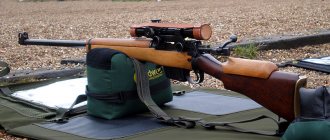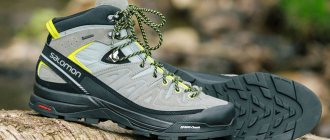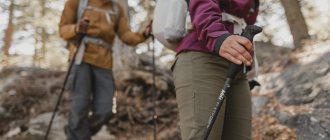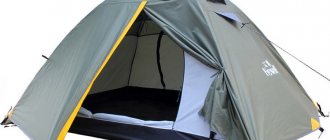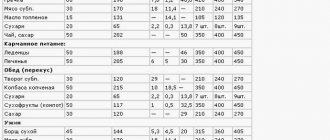Exercise: Shooting from air or electronic weapons
Target: No. 8 Distance: 10 meters.
Shooting is done from an air rifle or electronic weapon. Shots - 3 test, 5 test. Time to shoot - 10 minutes. Preparation time: 3 minutes.
Shooting from an air rifle (VP, type IZH-38, IZH-60, MP-512, IZH-32, MP-532, MLG, DIANA) is carried out from a sitting or standing position with elbows resting on a table or counter at a distance of 10 m ( 5 m for participants of the III stage of the complex) on target No. 8. The organizer provides weapons for performing the test.
We recommend that you organize your own shooting range to prepare and conduct shooting competitions and pass the standards (no permits required):
Rifles recommended for passing GTO standards
Air rifle MP-512-24 combined stock
No. 261045 We are waiting
RUB 7,360
Air rifle MP 61 (five-shot)
No. 261007 We are waiting
6,420 rub.
Air rifle MP-512S-00 (updated design, 51291)
No. 261034 We are waiting
RUB 5,410
Air rifle MP 512-44 Murena
No. 261015 We are waiting
RUB 6,735
Is it possible to shoot with pneumatic guns in the city - liability under the law
On the Internet you can come across a fairly large number of articles that say that the use of an air pistol (or rifle) within the city is prohibited by law.
However, what should a person do who has acquired such a weapon for self-defense and stumbles upon several robbers with a knife in a dark alley - is it really possible that in such situations the law is on the side of the offenders? Or are there still several important points in the “Gun Law” that most people forget about?
For what purposes is it permissible to use pneumatic weapons?
First, let's figure out whether your pistol fits the term “air gun.”
Article Federal Law No. 150 of 1996 (better known as the “Weapons Law”) clearly states that an air weapon is a rifle or pistol that uses 4.5 millimeter caliber cartridges and also has a shot power of more than 3 J.
However, practice shows that most pneumatic models do not fall into this category, since the muzzle energy is 3 J. Thus, such models are not classified as weapons, but are more like a toy.
As for pneumatics, the muzzle energy of which ranges from 3 to 7.5 J, such weapons are classified as “Civilian weapons” and fall under the article of the “Weapons Law”. It is in the use of such pneumatics that the Constitution of the Russian Federation limits owners.
You can carry such weapons with virtually no restrictions (even in the subway or at a bus station, if you have the necessary documents), but their use in crowded places is permissible only in case of self-defense, for example, if you have to fight off a robber with a knife or an angry dog. In all other cases, the use of a rifle or pistol with a power exceeding 3 J is prohibited by law.
Why is the “Weapons Law” so categorical towards owners of pneumatic weapons? The whole point is that any adult citizen can purchase a pistol or rifle with a power of no more than 7.5 J, without presenting any documents (except for those confirming age).
As for pneumatics, the shot energy of which is below 3 J, even a teenager can purchase it. However, even the weakest air pistol can cause irreparable damage to health if the bullet hits the temple or eye.
Therefore, the state is forced to restrict pneumatic gun owners from using weapons, but not from purchasing them.
Where can you shoot air rifles?
So, if in the city you are allowed to shoot a pistol or rifle only in life-threatening situations, then what is the point of buying pneumatic guns at all? Everything is very simple - just use weapons in places specialized for this, and there will be no problems with the law:
- A forest or field located outside the city. If a pneumatic weapon was purchased for hunting purposes, then it is allowed to be used in places where game lives. However, it is important that this does not conflict with local hunting laws. In most regions of the Russian Federation, it is prohibited to use pneumatic guns to shoot predators or medium-sized fur-bearing animals. However, hunting for squirrels, crows, and pigeons is acceptable almost everywhere if we are talking about shooting outside a populated area.
- Shooting range and specially equipped shooting ranges. The most preferred places for those who purchased air guns for training or sporting purposes. You can use a pistol or an air gun in a shooting range even if such an establishment is limited from the city limits only by a low fence. All responsibility for accidents lies with the owners of shooting ranges and shooting ranges, so the demand comes from them. However, it is worth understanding that visiting such establishments is far from free.
- Airsoft and hardball courts. Recently, military tactical games using air guns have become increasingly popular. In the first type of competition, the use of pneumatics is allowed, the shot power of which is no more than 3 J. In the second case, the use of weapons up to 5 J is allowed. Only in these places is it allowed to use an air pistol or rifle to shoot at people. Of course, visiting such places is not free and requires certain documents.
This is the main list of places where you can shoot with pneumatics without fear of criminal or administrative liability. As for public places, transport and places where large numbers of people gather, the use of even a pistol with a power below 3 J can lead to serious punishment.
What is the legal liability for violations?
- For carrying a pneumatic weapon openly (in your hands, in full view of everyone), a fine of 3,000 to 5,000 rubles is provided, as well as the confiscation of a pistol or rifle. So, before you go for a walk around the city with a pneumatic gun, it is strongly recommended that you get a holster or a special case, and also do not pull out your weapon unless absolutely necessary. Any actions with a pistol can be considered as posing a threat to the lives of others, even if it seems to the owner of the pneumatic that there is no such threat.
- For shooting from an air gun within the city, punishment is provided in the form of a fine of 40 to 50 thousand rubles, as well as confiscation of the weapon, or a ban on its use and carrying for 3 years. If the offender chooses the second option, after which he is caught again breaking the law, then he will no longer be able to get away with a fine. Most likely, the court will decide on correctional labor for 2-3 months or isolation in a pre-trial detention cell for several weeks.
- For firing a pneumatic weapon during rallies and various social events, the most severe punishment is faced - arrest for up to 7 years according to Article 213 of the Criminal Code. In addition, do not forget that if people were injured when using pneumatic guns, this can also increase the prison term. In rare cases, the court decides on 2 years of correctional labor or a fine in the region of 100,000 rubles (if no one was hurt and the rally was not disrupted).
GTO standards for shooting 2015
| Stage, Age, (girls and boys, men and women) | Exercise | Bronze | Silver | Gold |
| Level 3 (11-12 years old) | Air rifle shooting from a sitting or standing position with elbows resting on a table or counter, distance 5 m (points) | 10 | 15 | 20 |
| or from an electronic weapon from a sitting or standing position with elbows resting on a table or counter, distance 5 m (glasses) | 13 | 20 | 25 | |
| 4th level (13-15 years old) 5th level (16-17 years old) 6th level (18-24 years old) 6th level (25-29 years old) 7th level (30-39 years old) | Air rifle shooting from a sitting or standing position with elbows resting on a table or counter, distance 10 m (points) | 15 | 20 | 25 |
| or from an electronic weapon from a sitting or standing position with elbows resting on a table or counter, distance 10 m (glasses) | 18 | 25 | 30 | |
| 8th level (40-49 years old) 9th level (50-59 years old) | Air rifle shooting from a sitting or standing position with elbows resting on a table or counter, distance 10 m (points) | 25 | ||
| or from an electronic weapon from a sitting or standing position with elbows resting on a table or counter, distance 10 m (glasses) | 30 | |||
Lesson No. 2 – “What is needed for proper pistol training”
Response from the Team of Trainers:
A simple click? - This is not enough. Simple retention is also not enough. This is you training static endurance, which no shooter can do without. Try the “wave” pattern: hold for 20 seconds – 20 seconds rest, 25x25, 30x30, 40x40, 60x60, and back – 40x40…. After this, a break of 20 minutes, after that we repeat... and then don’t say that you didn’t train yesterday, they won’t believe you...
Working with your eyes closed is the first remedy for horizontal vibrations. Get your hand with the pistol to lower into the aiming area, lower it without visual control, i.e. with closed eyes - solely on muscle sensations. Make sure the gun is in the aiming area.
When working with a pipe, or on a Scatt, force yourself to navigate by the holes on the target in a different way: a shot in the central ring of the ten is “10”, a shot in the overall ten, or if you didn’t touch the central circle of the ten, it’s nine (“ 9”!), a shot at nine is eight..., a shot at eight is seven... This will make your work more accurate and prevent you from chasing ten, because... Only the central one will be 10 - from 10.5 - ten.
| Mushroom julienne with sour cream and cheese |
Test procedure
Target: No. 8 Distance: 10 meters. Exercise: Shooting from air or electronic weapons
Shooting is done from an air rifle or electronic weapon. Shots - 3 test, 5 test. Time to shoot - 10 minutes. Preparation time: 3 minutes.
Shooting from an air rifle (VP, type IZH-38, IZH-60, MP-512, IZH-32, MP-532, MLG, DIANA) is carried out from a sitting or standing position with elbows resting on a table or counter at a distance of 10 m ( 5 m for participants of the III stage of the complex) on target No. 8. The organizer provides weapons for performing the test.
Shooting from electronic weapons is carried out from a sitting or standing position with elbows resting on a table or stand at a distance of 10 m (5 m for participants of the III stage of the complex) at target No. 8.
The result is not counted:
- a shot was fired without the command of the sports judge;
- the weapon is loaded without the command of the sports judge.
Shoot from a weak hand
During some matches, shooters will have to shoot from both their strong and weak hands. The strong hand is the one from which the holster hangs. The second hand is weak. The weapon should be held and fired using only the designated hand. Few amateur shooters practice this drill and it affects their performance during competition.
Set up two IDPA/USPSA targets 2 meters apart and shoot them at 6 to 9 meters. To practice shooting from a weak hand, start the exercise with the weapon lowered. For a strong hand - with a weapon in a holster. At the signal, fire two shots in the torso area and one in the head area of the target, then transfer fire to the second target and do the same. This drill will force you to deal with both horizontal and vertical firing and is great for practicing one-handed shooting.
Setting up for shooting while sitting at a table
This exercise is the simplest and most convenient for initial training in bullet shooting. The shooter's body position is familiar, almost no tension is required, the stability of the rifle and hands is greatest, and loading the rifle is the most convenient.
The shooter sits at the table or stands near the counter, choosing the most comfortable position for himself. The whole body is slightly turned to the right of the aiming line. When shooting, it is recommended to lean your chest slightly against the edge of the table, but at the same time maintain a free posture with minimal muscle tension.
The rifle must be grasped with the right hand by the neck of the stock so that the thumb clasps the neck of the stock on the left, and the other four fingers on the right. With your left hand, grasp the stock fore-end from below so that your thumb clasps the left side of the fore-end, and the other four fingers clasp the fore-end from the right side. The rifle should rest not on your fingers, but on your palm. Then lean over the table and rest your elbows on the table or, if shooting is carried out standing near the counter, rest your elbows on the counter. In this case, the left elbow and shoulder should be pushed forward as far as possible, and the left elbow should be exactly under the rifle. The right elbow is placed on the side, closer to you. The rifle must be inserted with the butt plate into the notch of the right shoulder and pressed against it. Lower your head onto the ridge of the butt. The shooter places his legs in a way that suits him. The body position should be calm and stable.
Self-checking the accepted position consists of the fact that after accepting the position, the shooter closes his eyes for a few seconds, then opens them and checks the alignment of the rifle pointing and aiming points.
Rice. 1 Shooting position while sitting at a table with your elbows resting on the table. Rifle above the left elbow: a - side view; b - front view
If it turns out that the rifle’s front sight does not coincide with the aiming point, then it is necessary to clarify the aiming of the rifle, but without violating the “shooter-weapon” system, that is, without moving the rifle relative to the shooter’s body.
If the aiming point of rifle 4 (Fig. 2) is on the side of aiming point 6, then you need to rotate the entire body along with the rifle around the vertical axis 2, passing through the fulcrum of the left elbow, until the aiming point of rifle 4 aligns with aiming point 6.
Rice. 2. Clarification of the rifle's horizontal aiming when shooting while sitting at a table: 1 - direction of rotation of the shooter's body; 2 — axis of rotation of the gunner’s body; 3 - aiming line until the rifle aiming is clarified; 4 - rifle aiming point until aiming is specified; 5 - the bull's eye of the target was on the right; 6—combined pointing and aiming points; 7 — location of the sight after clarifying the aiming of the rifle; 8 - aiming line after clarifying the rifle aiming
If the aiming point of the rifle 6 (Fig. 3) turns out to be lower (higher) than the aiming point 4, then you need to move a little away (move) with a chair from the table or stand a little further (closer) from the counter, but without moving your elbows 8.
Rice. 3. Clarification of the rifle's vertical aiming when shooting while sitting at a table: 1 - direction of movement of the shooter's body; 2 - aiming line after clarifying the rifle aiming; 3 — location of the sight after clarifying the aiming of the rifle; 4 — combined pointing and aiming points; 5 - the bull's eye of the target - turned out to be higher; 6 - rifle aiming point before clarification: 7 - aiming line before rifle aiming is clarified; 8 - elbows and arrows should be motionless
Accurate shooting is only possible if the rifle is applied uniformly for all shots of the exercise being performed.
The placement of the stock in the shoulder notch is also important. If the butt of the rifle is higher than the middle of the shoulder notch, then the recoil force increases due to the increase in the distance between the pair of forces: the recoil of the rifle and the resistance of the shoulder, and then the bullets will hit above the center of the target. If the butt of the rifle is below the shoulder notch, the bullets will hit below the center of the target.
From this it is clear that even with minor changes in the position of the butt in the shoulder recess, a large vertical dispersion of bullets will result.
After attaching the rifle, the index finger must be placed with the first joint on the trigger. In this case, the index finger should not touch the rifle stock. Lower the elbow of your right hand freely onto the table (stand). Tilt your head slightly forward and rest your cheek against the ridge of the butt.
Touching the cheek in the same place on the butt ridge for all shots will ensure good shooting accuracy. To uniformly touch the cheek to the ridge of the butt, it is recommended to touch the tip of the nose with the thumb of the right hand, grasping the neck of the butt.
Then you need to make sure that the position of the body and arms is comfortable and that no muscles are overly tense.
Basic Gun Safety Rules
When handling any firearm, the following basic rules must be strictly observed:
- The weapon is considered always loaded until it is possible to verify the opposite personally.
- You should always hold the weapon in the safest direction - the barrel should only be pointed at the target you are going to shoot at.
- The index finger should be outside the trigger guard. Exception: when the shooter looks at the target through the sighting device.
- Before you pick up a weapon, you need to study its technical characteristics and features.
- The weapon must be stored in a safe place that will prevent its unauthorized use by others. Weapons and ammunition are stored separately.
- Only pick up a weapon when sober.
Following these simple rules will help you avoid accidents that can result in injury or even death when handling firearms.
Aiming
Correct aiming is the most important element of shooting accuracy. Aiming (Fig. 4) consists of two elements: setting (adjusting) the sighting device at a given distance and aiming the rifle at the target using the sighting device.
Rice. 4. Aiming scheme when exceeding the average aiming point 1 - the middle of the sight slot: 2 - the upper edge of the front sight; 3 — aiming line; 4 - average trajectory of bullets; 5 - midpoint of impact - center of the target; 6 - target; 7 — aiming point; 8 — rifle barrel
The sight is installed at a given distance separately in the vertical and horizontal planes. In air rifles IZH-38 (IZH-22) this is achieved by adjusting the height of the sight with the power of the sight screw and changing the position of the base of the sight in the transverse groove of the breech of the barrel.
The air rifle sight is installed in advance, while the rifle is being brought into normal combat at a given shooting distance.
It is recommended that aiming be divided into two stages: preliminary and main. The preliminary stage, which takes up more than half of the total aiming time, should be used to check the correctness of the preparation. The main stage is used to more accurately aim the rifle and prepare to pull the trigger. This gradual aiming will reduce fatigue of the visual system and increase shooting accuracy. Each shot should be fired as quickly as possible, and the pauses between shots should be long enough to give the eyes time to rest.
Various types of sights are used for small arms: open, diopter with a rectangular or ring front sight, optical. IZH-38 (IZH-22) rifles have open sights.
Determination of the dominant eye.
Aiming is carried out with one eye, which is called the leading eye. Most shooters aim with their right eye, i.e. the right eye is the dominant eye. But there are also exceptions. Various methods are used to determine the shooter's dominant eye. The simplest method is as follows. In a sheet of paper measuring 20x20 cm, you need to cut a round hole with a diameter of 3 cm. Then, taking the sheet of paper in your outstretched hand, point the hole at a target mounted on a light background. Next, closing your right and left eyes alternately, watch the target. If the target is visible when the left eye is closed, but the target disappears when the right eye is closed, then the shooter's dominant eye is the right eye.
If it turns out that the shooter’s dominant eye is the left eye, then when shooting it is necessary to cover the right eye with a matte shield mounted on the head.
Previously, it was believed that when aiming, one should look with only one dominant eye, and the non-dominant eye should be closed. However, research by many masters of bullet shooting has practically proven that closing the non-dominant eye reduces visual acuity, and therefore the result of shooting. Therefore, it is recommended to look with both eyes when shooting. If this is difficult, the non-dominant eye can be covered with a narrow vertical strip of white paper or plastic so that the target for the non-dominant eye is covered.
Aiming with open sights.
To aim, you need to look with your dominant eye through the middle of the slot of the aiming bar at the upper edge of the front sight so that it is exactly in the middle of the slot and level with its upper side edges. This position is called "flat front sight". Then, maintaining this position of the eye, sight and front sight, bring the upper edge of the front sight under the bottom of the black circle - the “bull’s-eye” of the target with a small gap, i.e., at the aiming point. Try to keep these four elements: the eye, the front sight and the lower edge of the bull's eye on the same line. Do not be embarrassed that there will be deviations of the rifle due to vibrations of the shooter’s entire body in different directions from the aiming point (Fig. 5). Especially large deviations occur among novice shooters. Gradually, as a result of training, these deviations will become smaller and smaller, i.e. shooting will become more accurate. This will happen when the shooter learns to uniformly place his cheek against the ridge of the butt for all shots.
Fig. 5 Oscillations of the rifle aiming point around the aiming point 1 - target; 2 — “bullseye” of the target; 3— aiming point; 4 – hesitation on the part of the shooting master; 5 - hesitation in an experienced shooter; 6 - hesitation in a novice shooter
If, while aiming, the shooter kept the front sight level, and the rifle at the moment of the shot deviated and was not aimed at the aiming point, under the black circle, but, for example, 5 mm in any direction, then the hit will be 5 mm in the same direction. side. This is a parallel weapon offset error.
If the shooter does not keep the front sight level, the resulting angular error will be more significant. For example, when the front sight deviates from the middle of the slot by only 1 mm, the hole will be deviated from the center of the target by 23.4 mm.
Thus, the largest deviations are obtained from an uneven front sight, i.e., from angular errors in the deflection of the rifle. During aiming, the shooter's organ of vision works with great tension and fatigue accumulates in the muscles of the lens of the eye. Therefore, you should not alternately focus your eye many times at different distances: now at the sight, now at the front sight, now at the target. In addition, we must remember that our vision has the property of inertia, that is, when we move the focus of the eye from the target to the front sight and already see it, our vision still retains the same imprint of the target, and not its actual position. But during this time the rifle may already deviate from its previous position.
The difficulty of aiming lies in the fact that the nature of our vision does not make it possible to clearly see at once all three aiming elements we need, located at different distances from the eye. Only one element can be seen clearly, and the remaining two will be blurry or, as they say, will have a “crown”. A significant question arises: which of the aiming elements is more important to see clearly? Practice has proven that the best result will be obtained if there is a clear vision of the front sight (Fig. 6).
Rice. 6. Correct vision of aiming elements when shooting with open sights: 1 - “crown” of the upper edge of the aiming bar; 2 — “bullseye” of the target; 3— “crown” “bull’s-eye” of the target; 4 - clear front sight
Placing a clear front sight in the middle of the rib slot is easy to achieve, since the fuzziness of the edges of the slot is the same on both sides of the front sight. But it is very difficult to place the front sight in height, since there is no clear boundary between the upper protrusions of the aiming bar and the bull’s eye; they have “crowns” 1 and 3. Shooting practice has proven that it is necessary to align the front sight only along the solid line of the upper protrusions of the aiming bar and do not pay attention to the blurry part - the “crown” of the 1st sighting bar.
Intense and systematic work of the eyes during shooting gives excellent results in increasing visual acuity. For example, according to the Lviv Institute of Physical Culture, the visual acuity of shooters increases depending on the experience of shooting as follows: for shooters with up to 2 years of shooting experience - up to 1.4 diopters; for shooters with up to 10 years of shooting experience - up to 1.6 diopters; for shooting masters - up to 1.7... 1.8 diopters.
Typical mistakes of shooters.
A very harmful mistake is stalling the rifle (type d), i.e., during aiming, the front sight is correctly installed in relation to the sight and the aiming point, but with some tilt of the entire rifle in one direction. Beginner shooters mostly tilt their rifle to the right.
Manufacture error - stalling of the rifle must be eliminated at the very beginning of shooting training, since the shooter can get used to holding the rifle at an angle. It will be very difficult to relearn later. With a monotonous stall, there will be a good grouping of hits, but it will be very difficult to make an adjustment, i.e., determine where to place the aiming point. For example, if the STP is below the center of the target and the shooter takes the aiming point higher, then if the stall was to the right, the holes will be not only higher, but also to the right.
Rice. 7. Aiming errors when shooting with open sights: a - correct aiming; b - “small” front sight - bullets will hit lower; c - “large” front sight - bullets will hit above the target; d - the rifle is “dumped” to the right - the bullets will hit lower to the right; d - front sight to the left of the center of the sight slot - bullets will hit to the left of the target; e - the front sight is to the right of the center of the sight slot - the bullets will hit to the right of the target; g - large “clearance” - bullets will hit below the target; h - front sight in the bull's eye - bullets will hit above the target
Website of the TRP Norms, Official website of the TRP
Pistol shooter training that will soon bring success
The main thing to train is not the target and the bullets flying through it, but this is exactly what 80% of shooters do, according to our observation, but what needs to be trained is the feeling of the right shot, the feeling of an accurate deliberate shot at the center of the 10, this is what the leading shooters in the world do. Just hold, press and look at the target - they don’t do that. The work is going on at the highest level. In general, forget about the shot and the hole: our sport is about working on yourself.
There is such a type of training - shoot “on Fridays”, this means that all days you work without a cartridge and without a bullet - idle training, and only one day a week you can afford to work with a bullet. This is often used locally, during training at the “home” shooting range, especially during the off-season. Also, such training is used to train shooters who find it difficult to perform elements of technique and coach tasks, when regular training and working with a cartridge do not give the desired result.
Working idle all week, except for one day - Friday, the shooter implements what the coach has planned, works on the program for each shot that the coach suggested. The shooter works on mastering the accuracy of preparing a shot, delving into the essence of the given work, and mastering the processing of the trigger. During these periods, coaching control is very important. You, as a coach, observe the athlete, not allowing him to make a single mistake.
We’ll describe pistol training schemes some other time - the main thing for you is to take away a wealth of knowledge from each training session, I repeat, from each one. If you left the shooting range and you have nothing to write down in your shooting diary, it means you were thinking about paying for an apartment or paying off a loan, about getting a bad grade at college, but not about polishing every shot
Moreover, it doesn’t matter how many shots you make during such training, it is important that you forced yourself not to make mistakes. You were patient, you wanted to “cheat”, but you fired all the shots when you were ready
And you don’t need to convince yourself that an overall ten is a 10, believe our experience – an overall ten in training is an iron “nine” in competitions, and at least no less.
In our lessons, we want to tell you that shooting is not only about shooting at a target - it is, first of all, about working on your psychology and your mistakes, on the difficulties of hitting the very navel of the target, and for this you need to do some work. When practicing every shot in training, it should be like the last and decisive one. If you conduct every training session throughout the year, you will confidently declare yourself at the level of a candidate for the national team. We have worked with athletes of the highest level, and believe me, we know what we are talking about.
May God grant you health and patience.
With respect to all hard workers - Team of Ukrainian trainers.
Additional Tips
And now, the basic training has been completed, the technique has been successfully mastered, and in addition you should become familiar with the reasons that may affect shooting accuracy:
- Make sure that the screws on the stock mount are always firmly screwed in - even a slight looseness can lead to quite strong deviations when firing.
- Always make sure the front sight is firmly attached to the barrel. Also, the sighting bar must be securely attached to the weapon.
- Buy several types of bullets at once - some manufacturers are chasing the speed of release and make them too light, and this has a significant impact on accuracy. Also, bullets may not be universal and only fit a certain model of rifle. Therefore, it is better to try several types at once and choose the optimal ones.
- Keep the barrel of the gun clean - free of oil and lead residues.
- During shooting, the rifle's rebound is unacceptable - it must be pressed tightly to the shoulder, but without indentation.
- Remember that you need to stand still for a while after firing and let the bullet leave the barrel (this process is a little longer than with a pistol due to the length of the barrel).
Also familiarize yourself with the various models of rifles; read about the IZH 61 MR 61 air rifle here. For the best air rifles without a license, see here. For information about what Chinese-made air rifles exist, see below.

